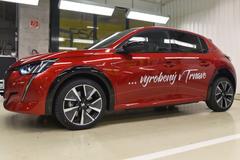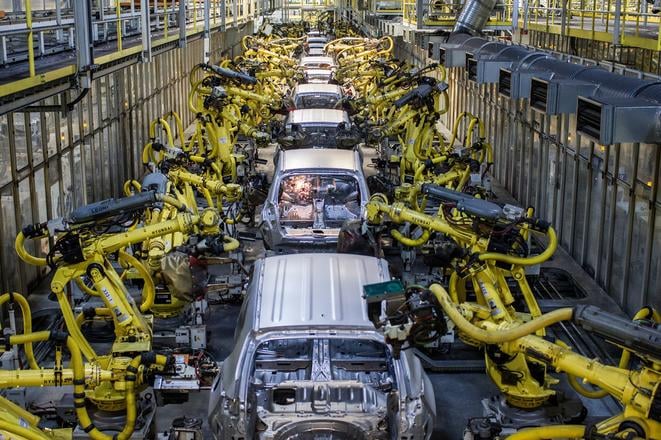More than one-third of jobs in industrial production in Slovakia are threatened with robotisation.
Investment Advisory Guide
Well-arranged information about the economy, labour market, investor support, legislation, and real estate as well as investment opportunities in Slovakia. For more details visit our online shop.
The most endangered are blue-collar workers, employees in call centres, and shop assistants and cashiers in retail and wholesale, who are gradually being replaced by self-service cash registers, as stems from a recent report of Slovenská Sporiteľňa.
“Currently, there are 151 robots per 10,000 employees in industrial production,” said Slovenská Sporiteľňa analyst Lenka Buchláková, adding that the global average is 85 robots per 10,000 employees. “Germany is the robotisation leader in Europe, with the number of robots in industrial production increasing every year by three times more than in Slovakia.”
Most robots in the automotive sector
The International Federation of Robotics shows that the global production and the sale of industrial robots have increased 114 percent in the past six years. The market with robots is expected to grow 14 percent annually by 2021, meaning that production should achieve 600,000 robot product a year. At the beginning of the millennium, the number was 80,000 a year.
The automotive sector is introducing the most robots in its production. Last year, its share of the total supply of robots comprised 33 percent.

“The reason is that the production of passenger cars has become more complicated in the past 10 years,” Buchláková explained, adding that most processes now require automation solutions. “This concerns mostly the producers of hybrid and electric vehicles that see a rising demand, but also traditional carmakers need to change their production.”
The reason is the effort to achieve climate goals by 2030, meaning that most new vehicles will have to produce low or zero emissions, the analyst continued.
Carmakers will also have to invest in applications for final works. The suppliers of car components, who are mostly small and medium-sized enterprises, are introducing automated processes more slowly. However, it is expected that this will change as robots will become smaller, more adaptable and programmable, and less financially demanding, Buchláková concluded.




 Robots assemble vehicles in the carmaker Kia Slovakia. (source: Sme)
Robots assemble vehicles in the carmaker Kia Slovakia. (source: Sme)